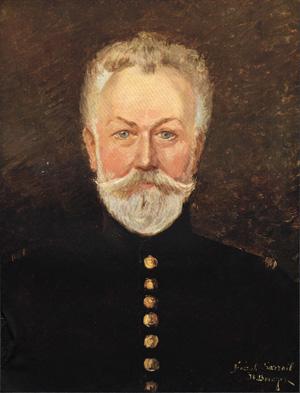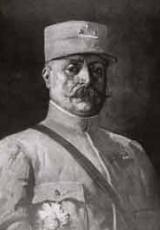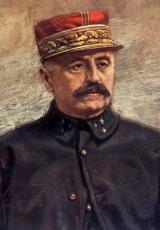Maurice Sarrail

Maurice (Paul-Emmanuel) Sarrail was born in Carcassonne on 6 April 1856, entered Saint-Cyr military academy in 1875, chose the infantry and served in Algeria and southern Tunisia, where he took part in many campaigns. He was admitted to the War Academy in 1883 and trained with the general staffs from 1885. In 1900, as the passions stirred by the Dreyfus affair were still running high, General André, the minister of war, choose him as aide-de-camp: that is when he began developing friendships in leftist political circles, which often furthered his career as well as earned him enemies. He was commander of the Saint-Maixent school, where he championed democratic ideas. He was commander of the Chamber of Deputies for several years before being called from 1907 to 1911 to the position of director of infantry at the War Ministry. In 1911 he was a major general, commanding the 6th army corps early in the war. On 2 September he replaced General Ruffey as head of the 3rd army and took a glorious part in the Battle of the Marne. His army, which was located between the fortress of Verdun and Sainte-Menehould gorge, led a successful push against the German forces.
When ordered to retreat, the troops pulled back approximately 50km without losing contact with Verdun, enabling them to repel the Kronprinz's army when the general offensive resumed. If Verdun had fallen then, it would have jeopardized the victory of the Marne. Like Galliéni, who was defending the fortified camp of Paris, and Foch, in the Saint-Gong marshes, Sarrail was an architect of the victory of the Marne, which saved France. In late 1915 General Sarrail became commander-in-chief of the Allied Armies of the Orient. In difficult conditions, he organised the defence of Salonica and ordered the offensive that led to the taking of Monastir in November 1916. He was relieved of his command on 14 December 1917. Sarrail did not have the time to personally harvest the fruits of his two years of perseverant efforts, but left his successors, General Guillaumat and, later, General Franchet d'Esperey, a sound situation that served as the foundation for the final push. In April 1918 General Sarrail became a reserve officer. The following year he made a bid for office in the legislative elections, hoping to represent Paris, but lost. Later he was reintegrated into the officer corps despite being over the age limit, a reward granted to all the generals who had served as commanders-in-chief before the enemy. In November 1924 he was appointed High Commissioner of the French Republic in Syria and replaced General Weygand as commander-in-chief of the Army of the Levant. After the Druze uprising and the violent way he quelled it, he was recalled to France. Henry de Jouvenel replaced him in Beirut. He returned to Paris in late 1925 and ended his military career. He died in Paris of a lung infection on 23 March 1929 and was buried in the Invalides.
Distinctions: Grand-croix de la Légion d'honneur Médaille Militaire with the Croix de Guerre.



